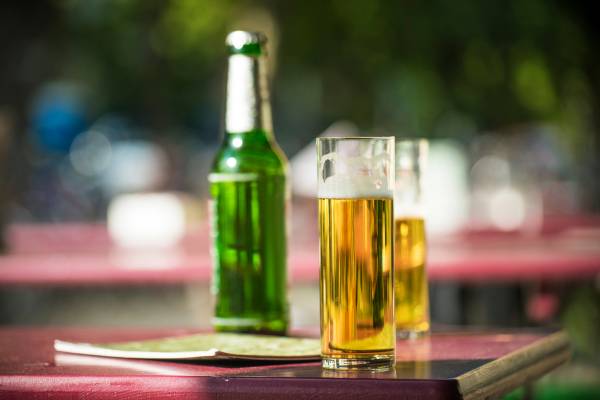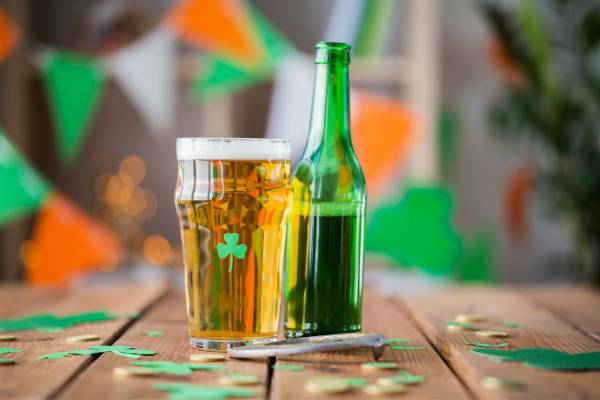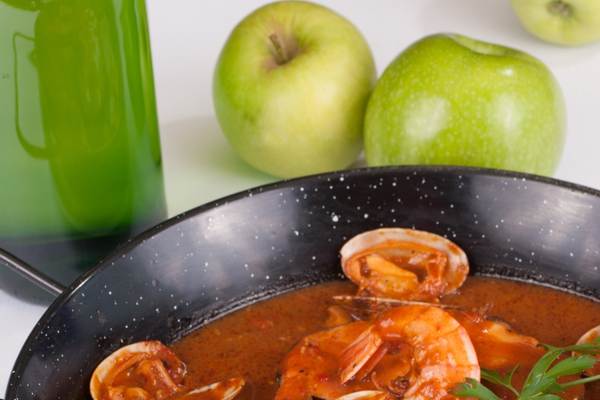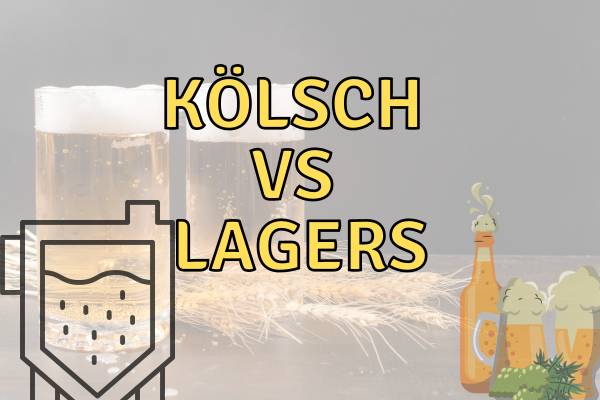Beer enthusiasts, rejoice! If you’ve ever contemplated the subtle nuances between Kolsch and Lager, look no further. In this post, we’ll delve into the fascinating world of these two German beer styles to uncover what makes each unique while highlighting their similarities as well.
- Kölsch and Lager are two distinct German beer styles with unique characteristics, including the use of different yeast strains and fermentation techniques.
- While both are lighter beer styles with refreshing and crisp taste profiles, Kölsch tends to have fruity and floral notes while lagers have a clean finish.
- When pairing with food, consider the occasion and dish; Kölsch is ideal for seafood, salads, and light chicken/pork dishes while lagers complement burgers, pizza, and spicy foods well.
- Understanding the differences between Kolsch vs. Lager can help you make an informed decision when choosing the right beer for any occasion depending on your preferences.
From fermentation techniques and yeast strains to flavor profiles and food pairings, get ready for an enlightening exploration that will leave you better equipped to choose the perfect brew for any occasion.
Understanding Kölsch And Lager
Kölsch is a light, crisp beer that is brewed using top-fermenting yeast at cooler temperatures like lagers, while lager uses bottom-fermenting yeast that ferments at cooler temperatures for a longer time.
10 Facts about Kölsch and Lager:
1. Kölsch is a type of beer that is brewed using top-fermenting yeast like ale, but at cooler temperatures like lagers.
2. That makes kölsch a “lagered ale”, which means it is fermented by a top-fermenting yeast at cooler temperatures and then aged for a period of time like a lager.
3. The primary difference between lagers and Kölsch is the fermentation technique employed. Lagers use bottom-fermenting yeast, while Kölsch uses top-fermenting yeast.
4. Kölsch was designed to compete with its famous German counterpart, Pilsner, which is a type of lager.
5. Kölsch is traditionally served in a stange, which is a straight cylinder of a glass.
6. Kölsch has a crisp, dry finish similar to a lager due to the cold temperatures used during fermentation.
7. Lager uses bottom-fermenting yeast and ferments at cooler temperatures for a longer time than top-fermenting yeast.
8. The yeast used in Kölsch is different from the yeast used in Pilsner, which contributes to differences in their taste and aroma.
9. Kölsch and Pilsner have some similarities, including their light color, moderate hop bitterness, and clean finish.
10. Kölsch and Pilsner also have some differences, such as their fermentation techniques and the type of yeast used.
Definition And Characteristics
Kölsch and Lager are two distinct beer styles that originated in Germany, each boasting its own unique characteristics. Kölsch is a type of lagered ale, using top-fermenting yeast – the same as used in brewing ales – but fermented at cooler temperatures like those employed for lagers.

This combination produces a refreshing, light-bodied beer with subtle fruity notes and a crisp finish.
On the other hand, Lager is brewed using bottom-fermenting yeast strains at even colder temperatures than Kölsch. This results in an extended fermentation period yielding clean flavors accentuated by minimal fruity esters typically associated with ale yeasts.
Lagers encompass diverse subcategories such as Pilsner (famous for its straw-like hue and pronounced hop bitterness) or Bock (richer and darker), generally characterized by their smoothness, balanced flavor profile, low-to-medium hop presence, and moderate alcohol content.
Fermentation Techniques
Kolsch and Lager have different fermentation techniques that contribute to their unique taste and aroma. Kolsch uses top-fermenting yeast, which means that the yeast is added to the beer mixture at a warmer temperature than lagers.
If you want to refresh your knowledge on top and bottom fermented beers, check out this video on ales and lagers:
This results in a fruity and floral flavor profile with hints of sweetness. On the other hand, Lagers use bottom-fermenting yeast that ferments at cooler temperatures for a longer time than top-fermenting yeast.
The differences in the fermentation techniques also affect how these beers are served. Kolsch is traditionally served fresh, directly from barrels or tanks, while lagers are aged for an extended period before being bottled or canned.
Additionally, lagered beers typically require more time to ferment and condition than Kolsch-style beers, making them harder to produce quickly in large quantities without sacrificing quality.
Differences Between Kolsch And Lager
Kolsch and Lager differ in several ways, including their yeast strains, fermentation temperatures, serving styles, and flavor profiles – keep reading to find out more about these differences!
Yeast Strains
Kölsch and Lager differ in the yeast strains used during their fermentation process. Kölsch is fermented with a top-fermenting ale yeast, while lagers use bottom-fermenting yeast.
The difference in yeast contributes to the distinct flavor profile of each beer style.
The type of yeast also affects the aroma of these beers. Top-fermenting yeasts like those used in Kölsch can create fruity and floral aromas, while bottom-fermenting yeasts produce more subtle notes like bread or malt.
Fermentation Temperatures
The temperature at which beer is fermented plays a crucial role in determining its final taste and aroma, and this holds true for both Kolsch and Lager. While lagers are typically brewed using bottom-fermenting yeast at cooler temperatures ranging between 45-55°F, Kölsch uses top-fermenting ale yeast but is still brewed at relatively cool temperatures of around 60°F.
The low temperature allows the yeast to ferment slowly, creating a clean flavor profile and a crisp finish that is common to both styles.
To illustrate how much temperature affects the fermentation process of these German-style beers: Lagers require refrigeration during storage – something that brewers have done since the invention of refrigeration technology by Carl von Linde back In the late 1800s; Kölschs can be left out at room temp or slightly cooler without detriment due to their more delicate nature (although fridge storage will help maintain freshness).
These fermentation techniques make Kolsch light-bodied with very subtle fruit notes while lager’s cool condition means it has fewer esters making it drier than Ale variants such as Belgian Witbier or American Blonde Ales.
Serving Styles
Traditionally, Kölsch is served in a stange glass, which holds 200 ml of beer. The glass has a narrow base and wide mouth that allows the aroma to escape while drinking.

This also helps maintain the carbonation level of the beer for a longer time. On the other hand, lagers are commonly served in pint glasses or mugs.
When it comes to serving temperatures, Kölsch is traditionally served at slightly cooler temperatures than lagers. Typically, Kölsch is served between 7°C to 10°C (45°F-50°F), while lagers can be enjoyed at colder temperatures ranging from 2°C-5°C (35°F-40°F).
Flavor Profiles
Kolsch and Lager have distinct flavor profiles due to their different fermentation methods. Kolsch has a fruity, slightly sweet taste with a subtle hoppy finish, while Lager has a crisp, clean taste with a bitterness that can range from low to high.
The yeast strains used in each beer also play a role in their flavor profile.
Overall, both beers are known for their refreshing qualities and light body. They pair well with many foods such as seafood, salads, burgers or pizza depending on the style of beer chosen.
Similarities Between Kolsch And Lager
Both Kolsch and Lager are lighter beer styles, often served in a stange glass, with a refreshing and crisp taste that originated in Germany.
Lighter Beer Styles
Kolsch and Lager are both considered lighter beer styles, perfect for easy drinking on a hot summer day. These beers have a lower alcohol content and higher carbonation levels than other beer styles.
Additionally, they tend to be refreshing and crisp with a clean finish.
While Kolsch tends to have a fruity taste with mild hops, Lager has more of a malty flavor that is slightly bitter. The difference in taste makes them ideal for different food pairings with Kölsch complementing seafood dishes like shrimp scampi or sushi while lagers are better matched with spicy foods like burgers and pizza.
Refreshing And Crisp
Both Kolsch and Lager are known for their refreshing and crisp taste, making them perfect drinks on a hot summer day or as an accompaniment to lighter dishes. The fermentation techniques used in brewing these beers give them this signature flavor profile.

For example, Kölsch is brewed with ale yeast but fermented at cooler temperatures like lagers, giving it a dry finish that is similar to lagers.
These refreshing flavors make both Kolsch and Lager popular beer styles around the world. They provide an excellent base for experimenting with different types of hops, malts, and yeasts which have led to the creation of many craft beer variations from these two classic German styles.
Originated In Germany
Both Kolsch and Lager have their roots in Germany’s brewing traditions. The Kolsch beer style originated in Cologne, Germany, over 100 years ago and it was quickly embraced by the citizens of the city as their local brew.
On the other hand, lagers are believed to have been first brewed in Bavaria, southern Germany around the 16th century. Today, both types of beer are still closely associated with German brewing culture and have become quite popular worldwide due to their unique flavor profiles and refreshing taste.
Comparison With Pilsner And Blonde Ale
Kölsch is often compared to Pilsner and Blonde Ale due to their similar beer styles, but Kölsch has a unique flavor profile that sets it apart.
Similar Beer Styles
Kölsch and lager are just two of many beer styles that share similarities in their characteristics. They’re both light, refreshing, crisp beers with a moderate hop bitterness but have distinct differences in their fermentation techniques and yeast strains used.
Pilsner is also another similar style that can be compared to Kölsch and Lager. Pilsners tend to have a more pronounced hop aroma and flavor than Kölsch while having a richer maltiness than Lagers.
Blonde Ale, on the other hand, has significant differences from these three beer styles as it is brewed like an ale but with lower ABV levels like Kölsch rather than lagers or pilsners which typically range between 4-8% ABV.
Some food pairings suggestions include seafood, salads or light chicken dishes with Kolsch since it has fruity notes perfect for complementing lighter meals; burgers pizza or spicy foods go well with Lager because its clean taste cuts through rich flavors to provide balance while Pilsner pairs nicely alongside snacks likes nuts and chips due to its sharp flavors which accommodate savory elements perfectly!
Flavor And Aroma Differences
The flavor and aroma differences between Kölsch and Lager are subtle but noticeable. Kölsch tends to have a fruitier taste, sometimes described as having notes of green apple or pear.
It’s also more delicate in terms of bitterness, with a mild hop profile that is balanced by the sweetness of the malt. On the other hand, lagers tend to have a crisper taste and a cleaner finish, which can be attributed to their use of bottom-fermenting yeast at cooler temperatures for a longer period.
If you’re looking for an easy-drinking beer with refreshing fruitiness that goes well with light dishes like seafood or salads, then Kölsch might be your go-to choice. For those who prefer clean-tasting beers with crisp finishes that match well with burgers or spicy foods, lagers could be your perfect match.
Food Pairing Suggestions
To choose between Kolsch and Lager, consider the occasion and food pairings; Kolsch’s light and fruity taste pairs well with seafood, salads, and light chicken or pork dishes, while Lager’s crisp and clean taste complements burgers, pizza, and spicy foods.
Kolsch is a beer style that is often described as having a light and fruity taste, making it an ideal pairing for seafood, salads, and light chicken or pork dishes. This beer has a crisp finish due to its fermentation process which takes place at cooler temperatures like lagers.

The flavors of Kolsch are subtle but refreshing, with hints of fruitiness from the ale yeast used in the brewing process. When paired with fresh seafood or light chicken dishes, the Kolsch complements the meal perfectly without overpowering any of the flavors present.
Its clean finish also makes it an excellent choice to pair with salads as it refreshes your palate between bites.
Good food pairings for Kölsch:
1. Seafood – Kolsch pairs well with light seafood dishes, such as grilled shrimp or fish tacos.
2. Salads – The light and fruity taste of Kolsch works well with refreshing salads, especially those with citrus or fruit accents.
3. Light Chicken or Pork Dishes – Kolsch’s crisp finish complements lighter chicken or pork dishes, such as grilled chicken or pork chops.
Good food pairings for Lager:
1. Burgers – The clean taste of lager pairs perfectly with classic burger flavors, whether you prefer beef or veggie burgers.
2. Pizza – Lager’s carbonation and mild flavor make it an ideal pairing for pizza of all kinds.
3. Spicy Foods – Lager’s effervescence can help cut through the heat in spicy dishes like curry or chili.
Lagers are known for their crisp and clean taste, which pairs perfectly with a variety of foods. This light-bodied beer is a great complement to burgers, as it doesn’t overpower the flavor of the meat while still providing a refreshing finish.
Pizza also goes well with lager due to its ability to cut through heavy tomato sauce and cheese flavors.
One of the reasons that lager pairs so well with food is due to its bottom-fermenting yeast, which creates subtle flavors that don’t compete with other dishes.
Additionally, lagers have been brewed for centuries using German brewing traditions and malted barley or wheat paired with hops to create unique flavor profiles.
Overall, both Kolsch and Lager are great options for a range of foods, making them perfect beers to enjoy at any meal!
Conclusion
In conclusion, understanding the differences and similarities between Kolsch and Lager can help you make an informed decision when choosing the right beer for any occasion.
The main difference between the two is in their brewing process. Kolsch is brewed using ale yeast at a warmer temperature than lager, which is brewed with bottom-fermenting yeast at cooler temperatures. This results in Kolsch having a fruity taste while Lager has a crisper, cleaner flavor.
To sum up the differences between the two, here are 5 key points about each style:
Kölsch:
- Originates from Cologne, Germany.
- Brewed using top-fermenting ale yeast and lagering process.
- Light, crisp, and refreshing taste with a balance of fruity esters and maltiness.
- Pale gold to straw yellow in color with brilliant clarity.
- Pairs well with lighter dishes, seafood, and mildly spicy foods.
Lager:
- Originates from Central Europe, particularly Bavaria.
- Brewed using bottom-fermenting yeast and cold fermentation process.
- Clean, crisp taste with a focus on malt and hops (varying depending on style).
- Appearance ranges from pale straw yellow to deep amber or dark brown.
- Food pairings vary greatly depending on style, from light dishes to hearty stews and roasted meats.
While both are light, crisp and refreshing, their unique flavors and fermentation techniques set them apart. Similarly, Pilsner and Blonde Ale have distinct characteristics that offer different taste experiences.
Whether you prefer top-fermenting or bottom-fermenting yeast strains or a cooler fermentation temperature, there is a German beer style to suit your palate.
FAQs
Is Kölsch a lager or pilsner?
Kölsch is neither a lager nor a pilsner; it is a unique style of beer originating from Cologne, Germany. Kölsch is an ale, but it shares some characteristics with lagers due to its cold fermentation and extended cold conditioning. It is light, crisp, and has a subtle fruity flavor, which sets it apart from both lagers and pilsners.
What type is Kölsch beer?
Kölsch beer is a light, refreshing, top-fermented ale that originates from Cologne, Germany. It is characterized by its clear, straw-yellow color, moderate hop bitterness, and a slightly fruity, crisp flavor profile. Kölsch is brewed according to the Reinheitsgebot (German Beer Purity Law) and is protected by an appellation, meaning only beers brewed in Cologne can be labeled as Kölsch.
Is Kölsch similar to pilsner?
Kölsch and Pilsner are similar in that they are both light, crisp, and refreshing beer styles with a golden color. However, there are some key differences. Kölsch originates from Cologne, Germany, and is an ale, whereas Pilsner comes from the Czech Republic and is a lager. Kölsch has a slightly fruity and delicate hop character, while Pilsner has a more pronounced hop bitterness and a cleaner, crisper finish.
Does Kölsch taste like lager?
Kölsch is a unique beer style that shares some similarities with lagers, but it also has its distinct characteristics. Both Kölsch and lagers are light, crisp, and refreshing, with a clear, golden color. However, Kölsch is brewed using ale yeast, which imparts a subtle fruity and floral aroma and flavor not commonly found in lagers. Additionally, Kölsch has a slightly more pronounced hop bitterness compared to most lagers. So, while Kölsch may taste somewhat like a lager, it has its unique nuances that set it apart.
What is Kölsch beer similar to?
Kölsch beer is similar to a light, crisp German-style ale with a slightly fruity and mild hoppy character. It can be compared to a German Pilsner or a Helles Lager in terms of its refreshing and easy-drinking nature, but it is an ale rather than a lager. Kölsch is also somewhat similar to a Belgian Pale Ale due to its subtle fruitiness and balanced malt profile.




